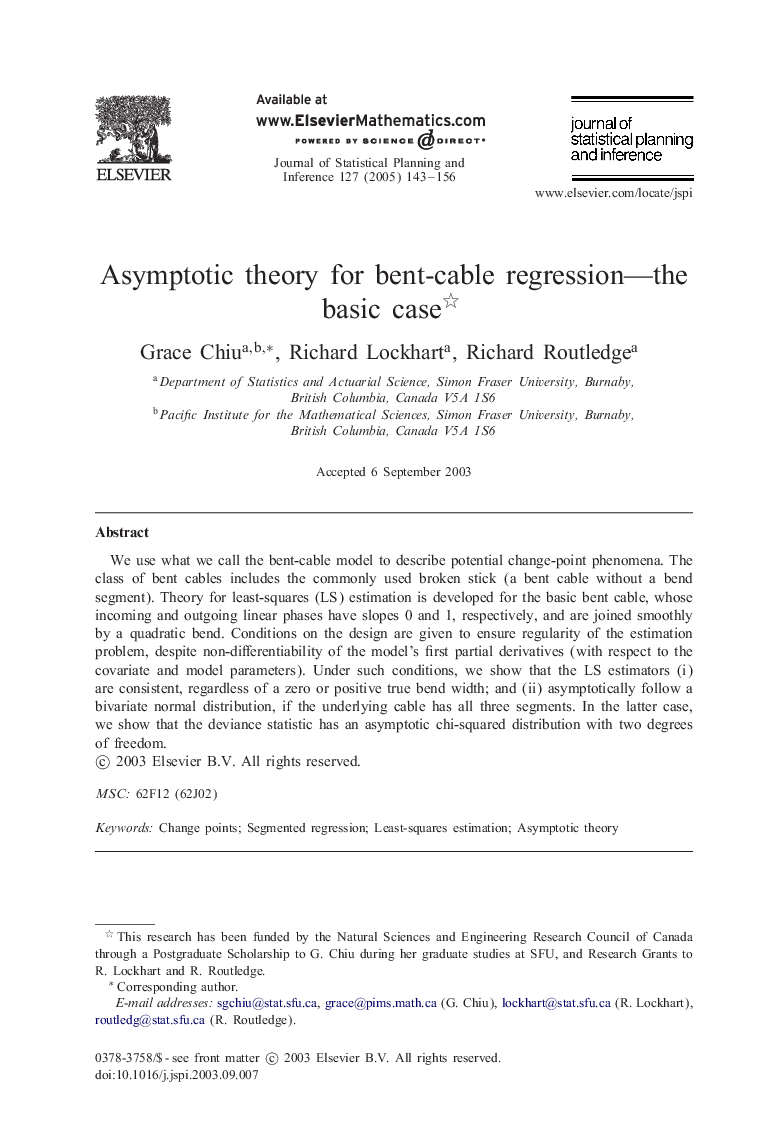| Article ID | Journal | Published Year | Pages | File Type |
|---|---|---|---|---|
| 9741820 | Journal of Statistical Planning and Inference | 2005 | 14 Pages |
Abstract
We use what we call the bent-cable model to describe potential change-point phenomena. The class of bent cables includes the commonly used broken stick (a bent cable without a bend segment). Theory for least-squares (LS) estimation is developed for the basic bent cable, whose incoming and outgoing linear phases have slopes 0 and 1, respectively, and are joined smoothly by a quadratic bend. Conditions on the design are given to ensure regularity of the estimation problem, despite non-differentiability of the model's first partial derivatives (with respect to the covariate and model parameters). Under such conditions, we show that the LS estimators (i) are consistent, regardless of a zero or positive true bend width; and (ii) asymptotically follow a bivariate normal distribution, if the underlying cable has all three segments. In the latter case, we show that the deviance statistic has an asymptotic chi-squared distribution with two degrees of freedom.
Related Topics
Physical Sciences and Engineering
Mathematics
Applied Mathematics
Authors
Grace Chiu, Richard Lockhart, Richard Routledge,
